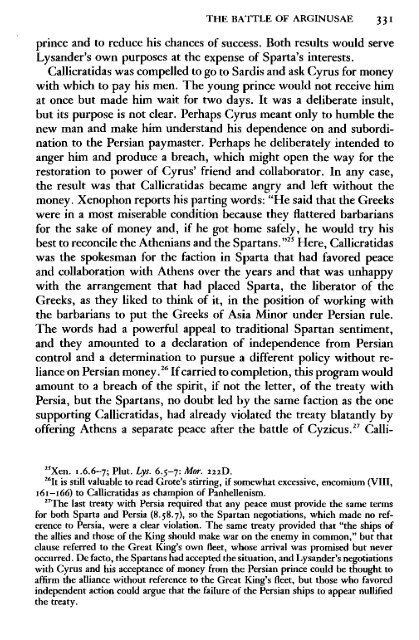The Fall of the Athenian Empire-(A New History of the Peloponnesian War) Donald Kagan - (1987)
MACEDONIA is GREECE and will always be GREECE- (if they are desperate to steal a name, Monkeydonkeys suits them just fine) ΚΑΤΩ Η ΣΥΓΚΥΒΕΡΝΗΣΗ ΤΩΝ ΠΡΟΔΟΤΩΝ!!! Strabo – “Geography” “There remain of Europe, first, Macedonia and the parts of Thrace that are contiguous to it and extend as far as Byzantium; secondly, Greece; and thirdly, the islands that are close by. Macedonia, of course, is a part of Greece, yet now, since I am following the nature and shape of the places geographically, I have decided to classify it apart from the rest of Greece and to join it with that part of Thrace which borders on it and extends as far as the mouth of the Euxine and the Propontis. Then, a little further on, Strabo mentions Cypsela and the Hebrus River, and also describes a sort of parallelogram in which the whole of Macedonia lies.” (Strab. 7.fragments.9) ΚΚΕ, ΚΝΕ, ΟΝΝΕΔ, ΑΓΟΡΑ,ΕΚΚΛΗΣΙΑ,ΝΕΑ,ΦΩΝΗ,ΦΕΚ,ΝΟΜΟΣ,LIFO,MACEDONIA, ALEXANDER, GREECE,IKEA
MACEDONIA is GREECE and will always be GREECE- (if they are desperate to steal a name, Monkeydonkeys suits them just fine)
ΚΑΤΩ Η ΣΥΓΚΥΒΕΡΝΗΣΗ ΤΩΝ ΠΡΟΔΟΤΩΝ!!!
Strabo – “Geography”
“There remain of Europe, first, Macedonia and the parts of Thrace that are contiguous to it and extend as far as Byzantium; secondly, Greece; and thirdly, the islands that are close by. Macedonia, of course, is a part of Greece, yet now, since I am following the nature and shape of the places geographically, I have decided to classify it apart from the rest of Greece and to join it with that part of Thrace which borders on it and extends as far as the mouth of the Euxine and the Propontis. Then, a little further on, Strabo mentions Cypsela and the Hebrus River, and also describes a sort of parallelogram in which the whole of Macedonia lies.”
(Strab. 7.fragments.9)
ΚΚΕ, ΚΝΕ, ΟΝΝΕΔ, ΑΓΟΡΑ,ΕΚΚΛΗΣΙΑ,ΝΕΑ,ΦΩΝΗ,ΦΕΚ,ΝΟΜΟΣ,LIFO,MACEDONIA, ALEXANDER, GREECE,IKEA
Create successful ePaper yourself
Turn your PDF publications into a flip-book with our unique Google optimized e-Paper software.
THE BATTLE OF ARGINUSAE 333<br />
ships was twice as large as Conon's force, and its quality was better.<br />
<strong>The</strong> A<strong>the</strong>nians were making a major effort to put a large reinforcement<br />
out to sea, and its arrival would change <strong>the</strong> balance <strong>of</strong> power to Sparta's<br />
disadvantage. By attacking places under A<strong>the</strong>nian control, Callicratidas,<br />
at <strong>the</strong> very least, could hope to gain easy victories while a cowed<br />
A<strong>the</strong>nian fleet stayed in port. If he were more fortunate, he might lure<br />
Conon out to sea and destroy <strong>the</strong> only A<strong>the</strong>nian naval force in being.<br />
Any commander would have been attracted by <strong>the</strong>se prospects, but<br />
for Callicratidas <strong>the</strong>y were irresistible. He was young and bold. His<br />
rebuke to Lysander, moreover, blamed him for inactivity while <strong>the</strong><br />
A<strong>the</strong>nian fleet served as a barrier and stood as a challenge to Spartan<br />
control <strong>of</strong> <strong>the</strong> sea. His own rhetoric called for action, and financial<br />
necessity demanded that it be quick. Even if funds came from Sparta,<br />
<strong>the</strong>y would not be enough to compensate for <strong>the</strong> loss <strong>of</strong> Persian support.<br />
If he won swift victories, on <strong>the</strong> o<strong>the</strong>r hand, he might raise funds more<br />
easily among <strong>the</strong> Greek cities; besides, he might hope to destroy <strong>the</strong><br />
A<strong>the</strong>nian navy and win <strong>the</strong> war at a stroke. Even if that did not happen,<br />
it would be better to eliminate Conon before <strong>the</strong> A<strong>the</strong>nian reinforcements<br />
arrived. For all <strong>of</strong> <strong>the</strong>se reasons Callicratidas set out at once.<br />
His first target was Delphinium, a fort on <strong>the</strong> island <strong>of</strong> Chios held<br />
by <strong>the</strong> A<strong>the</strong>nians (see Map 3). His overwhelming force persuaded <strong>the</strong><br />
mere 500 A<strong>the</strong>nians who held it to give it up without a fight and leave<br />
under a truce. After destroying <strong>the</strong> fort, he sailed to Teos, where he<br />
took that city by assault at night. 34 <strong>The</strong>se actions quickly demonstrated<br />
<strong>the</strong> young navarch's willingness to challenge <strong>the</strong> A<strong>the</strong>nian fleet at<br />
Samos, for both places were north <strong>of</strong> <strong>the</strong> A<strong>the</strong>nian base, and <strong>the</strong><br />
Spartans were required to sail past Samos to reach <strong>the</strong>m. <strong>The</strong> badly<br />
outnumbered Conon, however, chose to stay in port. Next, <strong>the</strong> Spartans<br />
sailed against <strong>the</strong> island <strong>of</strong> Lesbos, itself important to <strong>the</strong> A<strong>the</strong>nians<br />
but critical in preventing <strong>the</strong> Spartans from returning to <strong>the</strong><br />
Hellespont. <strong>The</strong> first target was Methymna, a city on <strong>the</strong> nor<strong>the</strong>rn<br />
coast <strong>of</strong> Lesbos controlled by a faction friendly to A<strong>the</strong>ns and by an<br />
A<strong>the</strong>nian garrison <strong>of</strong> 500 men. Callicratidas took <strong>the</strong> city by assault,<br />
with <strong>the</strong> help <strong>of</strong> traitors within <strong>the</strong> city, and allowed his troops to<br />
plunder <strong>the</strong> place. He did not allow <strong>the</strong>m to do as <strong>the</strong>y liked with <strong>the</strong><br />
J4Diod. IJ.76.3-4· Xenophon (1.5.15) reports <strong>the</strong> capture <strong>of</strong> Delphinium and Eion<br />
(emended to Teos by most editors) just after Notium. He does not provide a precise<br />
date, and his words "a little later" may refer to <strong>the</strong> actions <strong>of</strong> Callicratidas described<br />
by Diodorus. If not, we should prefer Diodorus' fuller account with its persuasive<br />
details.

















